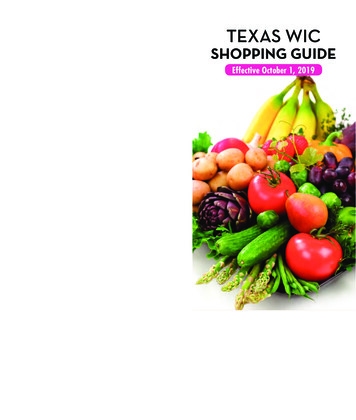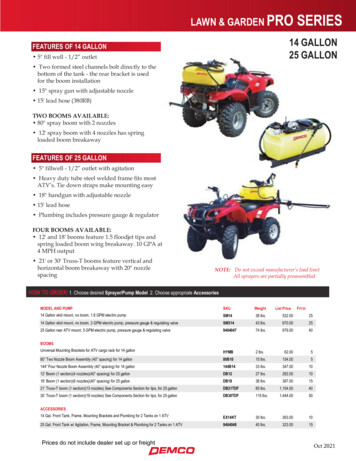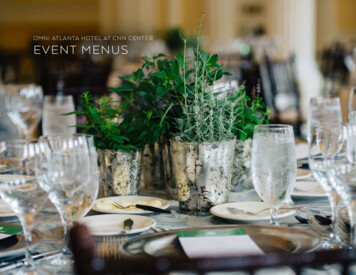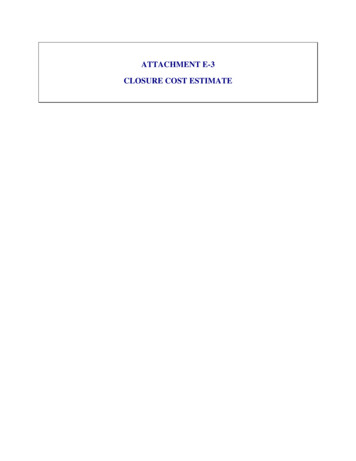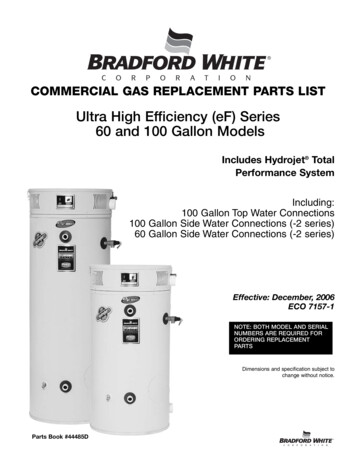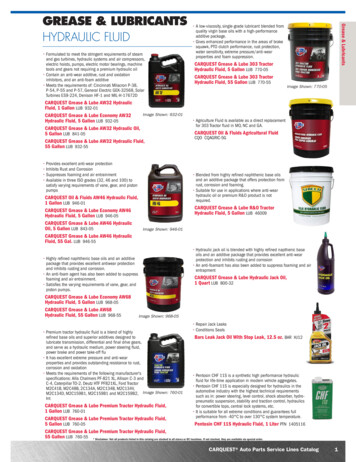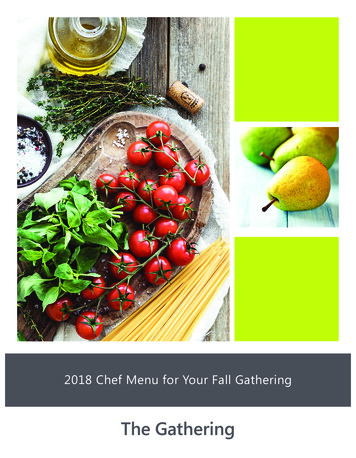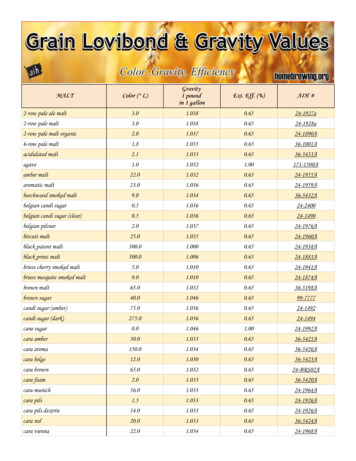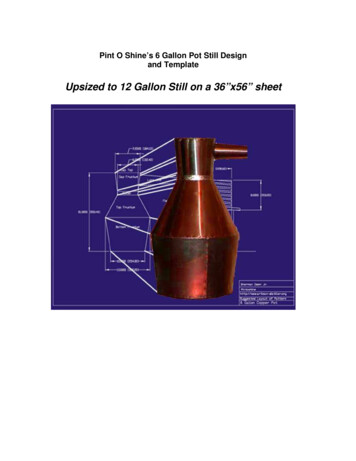
Transcription
Pint O Shine’s 6 Gallon Pot Still Designand TemplateUpsized to 12 Gallon Still on a 36”x56” sheet
Warning!I assume no responsibility to the use or accuracy of this document. It is intended foreducational purposes only. I maintain all copyright ownership for all my original work.This document may be used freely and circulated freely but may not be sold for profit, orincluded in any other book or website for profit. This specifically applies to web sites thatare for profit only and contain mostly advertising.Sherman Owen 2007Upsizing to 12 gallons, and new layout, by The Husker Distiller.
Design ConsiderationsWhen I decided to design the 6 gallon, copper pot still, I had few criteria in mind. First Iwanted to fit the whole thing on a single half sheet of copper. A half sheet is usually 3’ x4’. This size sheet is readily available by internet order. I have limited tools and limitedskills at metal working so I decided to imitate a construction style found in the book:“More Mountain Spirits” by Joseph Earl Dabney.I selected the Kentucky Still as my design. I research standard sheet metal layout patternsfor cones thinking I could use one of those to create my templates. I was wrong inthinking the existing layout guidelines were accurate enough to make even cone sections.I later learned that the shape I was in need of to construct the still was actually called afrustum. A frustum is a right cone in which the top has been cut off parallel to the base ofthe cone.I derived a series of calculations to allow me to lay out the flattened frustum in a drawingprogram to allow me to generate templates.Another design criteria was that I wanted a small stove top model to be able to runexperimental 2 to 5 gallon batches.The upsizing was done by Husker distiller. 6 gallon stills serve a purpose, but largerones also serve their own purpose. The copper sheet distributor I found on the web,provides reasonable shipping charges for sheets, up to 56”. Thus this still was made tofit as large as possible on a 36”x56” sheet. 12 gallons was able to be squeezed on tothat sheet, but the Flake stand did not fit. A diagram of how to make a 5 gallon flakestand on an extra 17”x36” sheet has been included in this document. The flake standwould not need to be made out of the thick 0.032 sheet. 0.025 would suffice.Software used to create this documentI used Cadopia’s free version of IntelliCAD 2000 for Windows. I acquired this programwhenever they were still giving it away for free. It is a very nice AutoCAD v14compatible program with All versions of windows I have used over the years. It has allthe standard AutoCAD functionality except for 3d rendering.Of course Open Office Word Processor was used for the assembling the textual parts ofthe document.I use Photoshop v6.0, Paint, and ACD Systems ACDSee v3.1 to create and modifygraphics other than AutoCAD drawings.The PDF file was generate using PDFCreator which is a free Open source PDF printerdriver and spooler with great functionality for assembling documents from lots ofdifferent sources. I had difficulty running this in Vista but I figured out a work around.Thank You for your interest and I hope it is useful for theeducational purposes in which it was intended.
Calculation ResultsI was aiming at a 6 Gallon pot for this project and I calculated on that was 5.99 gallons tothe bottom of the collar. These are the calculation me ians)α(degrees)L(in)M(in)Volume 12444.653742.332588.746Total7.283836967 Volume(L)Lyne Arm3.00015.0001.0000.06723.94722.5507.5175.99Lyne 69These are all the units I used to generate the drawings.(NOTE the 12 gallon, is simply the 6 gallon still scaled up by 1.26x within the CADprogram. That was the “magic” number that upsized to 12 gallons. The 12 gallonstill parts had to be repositioned to make them fit on the 36x56, and the CADprogram was also able to handle that job, and also to plot the 32 template pages.)Circle Patterns and AssemblyThe circles I cut from these templates have a ½” extension. Whenever I built my stainlesssteel model, I learned to hammer down the lip around the circle to create a pan. Withstainless steel this is a arduous task because of its hardness. I have not done it yet but Iintend to turn the lips on the circles the same way. I am hoping that the circles will benice, flat pans that I can easily rivet to the frustums and solder.If I am not able to create these nice hammered edges, I will cut tabs from the extensionand bend them with pliers. This is the method I used for the stainless pot still.Pattern PrintingThe end of the document contains a 32 page template that can be printed, assembled andused for a pattern to cut around like a dressmaker’s pattern. This is the method I use tobuild the stainless model. When printing the pattern, make sure to set Adobe Acrobat toprint actual size. You may try a page or two to test the scale. The scale of the grid is ininches. One square should be 1”x1”. I have been having good luck with most of theprinters I have used under the windows operating system.
When assembling the pattern, I cut off the top margin of the page to the solid line and theleft margin to the solid line and taper the pages starting top left and going to bottom right.The easiest way is to assemble one page at a time to the template. All parts are markedwith the page number and the edges are marked with the adjoining pages.Additional Resource InformationPint-o-Shine has put together a wonderful 6 gallon still template. That was the template(and the CAD .dwg drawings) which was used by Husker distiller, through a gracioussharing of information from Pint-o. The original 6 gallon pdf file can be located at:http://www.artisan-distiller.org/designs/Pint-o has also put some WONDERFUL videos together which show some step by stepissues in building this paper template, and also in WORKING the sheet copper. Thesevideos are WELL WORTH watching several times, before undertaking the building ofthis still. These videos are on you-tube at:http://www.youtube.com/view play list?p DADEC413C1D46214The discussion thread on the HomeDistiller forums can be read hp?t 5595
(NOTE the 12 gallon, is simply the 6 gallon still scaled up by 1.26x within the CAD program. That was the "magic" number that upsized to 12 gallons. The 12 gallon still parts had to be repositioned to make them fit on the 36x56, and the CAD program was also able to handle that job, and also to plot the 32 template pages.)
